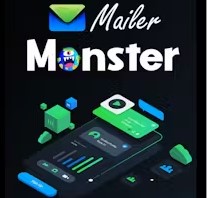Key Concepts and Takeaways
– Define your target audience to tailor your email content effectively.
– Use sign-up forms on your website to capture leads easily.
– Offer incentives, like discounts or free resources, to encourage sign-ups.
– Keep your email list clean by regularly removing inactive subscribers.
– Segment your list based on interests for personalized messaging.
– Craft compelling subject lines to improve open rates.
– Design mobile-friendly emails for better accessibility and engagement.
– Test different sending times to find the best performance for your audience.
– Monitor metrics like open rates and click-through rates to gauge success.
– Continuously refine your strategy based on feedback and analytics data.
 Do you want to build a list but don’t know where to start? You’re not alone. Most of the time, people with an interest in building a list don’t understand the best practices for starting an email marketing campaign that will yield results. This article will provide steps to help you get started on your email marketing campaign and take it seriously.
Do you want to build a list but don’t know where to start? You’re not alone. Most of the time, people with an interest in building a list don’t understand the best practices for starting an email marketing campaign that will yield results. This article will provide steps to help you get started on your email marketing campaign and take it seriously.
Email marketing has always been one of the most powerful ways to reach out to potential customers. It is also one of the most cost-effective, if done right. There are a number of pitfalls to avoid when setting up a campaign and developing your list, but if you do it right, then you are sure to see great results.
In a world where people are extremely busy and inundated with email notifications, it is important to stand out in order for someone to read your message. One of the ways you can do this is by making sure your subject line is an attention-grabbing sentence that entices the reader to open the email. Another way you can capture the reader’s interest is by including a reward just for signing up to receive emails from you.
Contents of This Page
Objectives of Any Email Marketing Campaign
The objectives of any email marketing campaign should be to get the recipients to buy your product or service, or open the email and check out your website. Offer discounts on products or services, provide useful information to help your customers make a decision, and ask for feedback.

– Your email should have an intriguing subject line that is short enough to catch the eye of your prospects.
The objectives of any email marketing campaign are simple: to generate sales, to keep in touch with past and present customers, and to generate leads. Email marketing campaigns help small business owners keep their name out there by sending them targeted emails based on various interests, such as specific products or promotions. The result is more sales for the company and a satisfied customer who will return for future purchases.

Every email marketing campaign should have clear goals with a set of objectives. The objective should be clear and well-defined, because without it, you’re not going to know what you want to achieve. For example, if your goal is to grow your newsletter subscribers list, an objective could be: Convert 10 first-time visitors into newsletter subscribers by the end of the quarter.
Getting Started With Building An Email Subscriber List
If you are running a small business, there are many things that need your attention on a day-to-day basis. One of those tasks is using marketing techniques to build up an email subscriber list. Those who have one know the benefits of having an email list, and those who don’t are missing out! Here are a few ideas you can use to build up your own list:

One of the best ways to increase your business or personal brand awareness is through email marketing. This can be a daunting task, but it shouldn’t be too difficult if you have the right tools and plan at your disposal. The first step is to create an email newsletter that will tell people what you’re about and what they can expect from you.
Once you have this established, it’s time to start collecting emails so that you can begin sending out newsletters.

Many small business owners are starting to use email marketing and have no idea where to begin. Whether you’re just getting started or looking for more advanced techniques, there is a lot of great information out there to help you get the most from your subscriber list. The process can involve three main steps: finding subscribers, sending content, and keeping in touch.
Coming Up With A Good Offer To Get More Subscribers
When you want to increase your subscribers, the first thing you need to do is find out what your audience is looking for. What kind of products do they enjoy? What types of things do they need? What has made them stop subscribing before? If you can answer these questions, then you will be able to come up with a good offer that will quickly attract more people.

For most businesses, having a large customer base is a positive thing. However, for those who are just starting out and don’t know many customers yet, it can be hard to get the ball rolling. One way to make people more interested in subscribing to your business’s services or products is by offering something free as an enticement.
With so many subscription options out there nowadays, a lot of people will be happy with just about any offer you give them.
The reason your email list has stalled at certain numbers is because you need to think of new offers for subscribers, so they want to come back and subscribe.
Building Trust With Your Email Marketing Subscribers
Email marketing is a great way to keep in touch with your subscribers and customers. It’s also the most cost-effective form of marketing, which is why it makes sense for you to build trust and credibility with your recipients. Below are some tips for best practices when sending email newsletters.

Building the trust of your email marketing subscribers is just as important as building the trust of your customers in person. When you send emails to your subscribers, they might not know what to believe or how to react. It can be hard to distinguish between spam and legitimate email, so it is important that you provide value with each message.
Building the trust of your email marketing subscribers is just as important as building the trust of your customers in person.
The best way to build trust with your email marketing subscribers is by making yourself a reliable expert in the industry you are selling to. As an expert, you can give your readers advice and tips that they can’t find anywhere else. The people who follow your blog or read your emails feel like they know you because they see you as an authority figure and not just someone trying to sell them something. It also helps to keep your content consistent.
Use Caution When Implementing An Email Marketing Campaign
Email marketing campaigns are a great way to reach your customers, but they can also be detrimental when not implemented properly. Don’t send mass emails without getting the recipient’s permission first, and always remember to include an unsubscribe button, so subscribers can easily opt out of your messages.
It is also important that you regularly test the links in your email; these links should lead back to a page on your website where your customer can sign up for a product or service.
It is not always easy to determine the best way to get your email marketing campaign going. There are many different tactics that you can take in order to make this happen. One of these strategies is via email onboarding. This tactic involves using a significant amount of emails to nurture customers who just signed up for your product or service
Did you know that the average person opens emails at a rate of less than once per day? It’s not surprising, but it can be an alarming figure for businesses who are using email marketing to grow their customer base. The key is to make sure your campaign is relevant and timely, so customers will actually open and respond to your messages.
If you have a lot of leads or a smaller budget, look for ways to find new customers rather than just continuing traditional forms of advertising.
The Key To Building A Good Subscriber List
Purchasing lists of email addresses can be a cost-effective way to gain new subscribers, but it’s not the most effective way of building a list. An email marketer needs to find their niche and create a following around that. Following the same general rules for search engine optimization (SEO), businesses should focus on factors like domain authority, content-quality score, click-through rate, social media impact and other metrics.
The key to building a good subscriber list is to be as specific as possible about what people can expect from your company. For example, let’s say you own a pet store. Well, that might be too specific for some people and not enough information for others. So say you sell fish instead of pets. Now this is more vague, but it’s also more informative.
If you’re looking to build a reliable, engaged subscriber base, be sure to provide your audience with value-adding content. Successful online businesses have been built by giving readers more than they expect in an engaging way.

Kevin Collier is a seasoned writer and technology enthusiast with a passion for exploring the latest industry trends. With a background in digital marketing and content creation, he brings insightful perspectives to imhits.com on emerging technologies, innovations, and their impact on everyday life. When he’s not writing, Kevin enjoys experimenting with new gadgets and sharing his knowledge with fellow tech aficionados.





